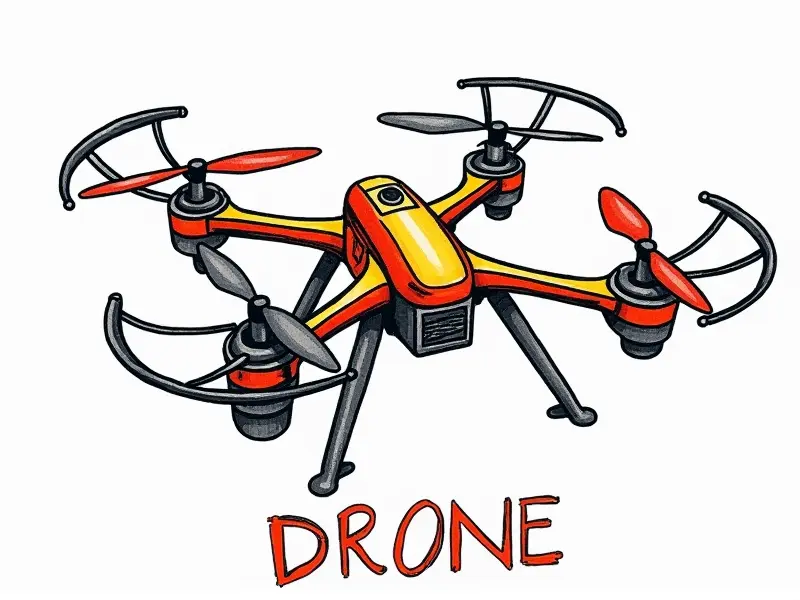RC plane crash recovery tips?

How to Recover from an RC Plane Crash
Operating remote control (RC) planes can be a thrilling hobby, but it also comes with the risk of crashes. Whether you're a beginner or an experienced pilot, understanding how to recover and repair your RC plane after a crash is crucial for maintaining your investment and continuing to enjoy this pastime.
Fixing Your RC Plane Post-Crash
After a crash, the first step is to assess the damage. Take time to carefully examine every part of your aircraft, from the wings and fuselage to the landing gear and propeller. Here are some key areas to focus on:
- Fuselage: Look for cracks or dents in the main body.
- Wings: Inspect for any bends, breaks, or damage to control surfaces like ailerons and flaps.
- Landing Gear: Check if struts are bent or wheels are damaged.
- Propeller: Ensure the propeller is not cracked or chipped.
Bounce Back: RC Plane Crash Repair
Once you've identified the damage, it's time to start the repair process. Here are some essential steps for effective recovery:
- Replace Broken Parts: If any components are beyond repair, replace them with new ones.
- Use Adhesive and Glue: For minor cracks or dents, use appropriate adhesives to fix the damage.
- Test Components: Before reassembling your plane, test each component individually to ensure it functions correctly.
Revive Your RC Plane After a Hard Landing
A hard landing can cause significant stress on your aircraft. Here’s how you can revive your RC plane after such an incident:
- Inspect for Hidden Damage: Sometimes, damage isn't immediately visible but can be detected through careful inspection.
- Check Electrical Connections: Ensure all electrical connections are secure and not damaged.
- Lubricate Moving Parts: Apply lubricant to any moving parts that may have become stiff or jammed during the crash.
Surviving RC Plane Crashes Successfully
To minimize damage from crashes, it's important to adopt preventive measures and techniques. Here are some tips:
- Practice Safe Flying Techniques: Always fly within your skill level and avoid risky maneuvers.
- Use Crash-Resistant Components: Invest in components designed to withstand crashes, such as reinforced propellers or crash-resistant foam wings.
- Carry a Repair Kit: Keep a repair kit with you when flying, including adhesives, spare parts, and tools.
Tips for Rescuing Your RC Plane After a Crash
Rescue operations after a crash can be crucial in salvaging your aircraft. Here are some tips:
- Quick Response: Act quickly to assess and repair damage before it worsens.
- Document Damage: Take photos or videos of the damage for insurance purposes or future reference.
- Contact Experts: If you're unsure about repairs, consult with experienced RC pilots or professionals who can offer guidance and assistance.
Essential Steps for RC Plane Crash Recovery
The following steps are essential to ensure your RC plane is ready to fly again after a crash:
- Initial Assessment: Thoroughly inspect the aircraft for any visible damage.
- Detailed Inspection: Use magnifying tools and detailed inspection techniques to find hidden damage.
- Repair Damaged Parts: Replace or repair damaged components using appropriate materials and methods.
- Test Functionality: Ensure all systems are working correctly before flying again.
RC Plane Crash Survival and Repair Tips
To enhance your ability to survive crashes and effectively repair them, consider the following tips:
- Regular Maintenance: Keep your RC plane in good condition through regular maintenance checks.
- Learn from Mistakes: Analyze what went wrong during a crash to prevent similar incidents in the future.
- Stay Updated: Stay informed about new technologies and materials that can improve your RC plane's durability.
Post-Crash Care for Your RC Airplane
Caring for your RC airplane after a crash is crucial to its longevity. Here are some care tips:
- Store Properly: Store the aircraft in a dry, dust-free environment.
- Check Regularly: Periodically check for any signs of wear or damage even if it appears to be functioning well.
- Use Protective Covers: Use protective covers when storing your RC plane to prevent dust and debris from accumulating.
Bounce Back from an RC Plane Mishap
Mishaps are inevitable, but bouncing back is a skill that can be honed. Here’s how you can recover quickly:
- Stay Calm: Maintain composure to make clear-headed decisions during the recovery process.
- Seek Help: Don't hesitate to seek help from fellow RC enthusiasts or professionals when needed.
- Reflect and Improve: Reflect on what happened and how you can improve your flying skills and equipment.
Mastering RC Plane Crash Recovery Techniques
Mastery in crash recovery techniques involves a combination of knowledge, skill, and experience. Here are some advanced tips to enhance your recovery process:
- Advanced Repair Methods: Learn more sophisticated repair methods such as carbon fiber reinforcement.
- Customization: Customize your RC plane with features that can help it survive crashes better, like reinforced landing gear or crash-resistant foam wings.
- Continuous Learning: Stay updated on the latest advancements in RC technology and repair techniques.
Conclusion
Crashes are a part of flying RC planes, but with the right knowledge and skills, you can minimize damage and quickly get your aircraft back into the air. By following these recovery tips and adopting preventive measures, you can ensure that your RC plane remains in top condition for many enjoyable flights to come.

